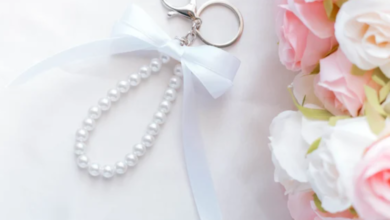Eco-Friendly Jewelry Styles Shaping Today’s Conscious Shoppers

In today’s world, environmental responsibility is top of mind for many consumers—and the jewelry industry is rapidly evolving to meet this new demand for sustainability. As shoppers seek pieces that reflect their values, designers and brands are adopting ethical practices and innovative materials to lessen environmental impact, all while maintaining artistry and beauty. With options like Kate Maller – Artisan Jewelry, it’s now easier than ever to adorn yourself with pieces that are as ethical as they are elegant.
This transformative movement in the industry is giving rise to a range of thoughtful trends. Consumers want assurance that their cherished accessories are not contributing to harmful mining practices or unethical labor. Thankfully, many jewelers are taking meaningful steps—reducing waste, preserving traditions, and being transparent about sourcing. This guide explores these emerging trends, offering insight for anyone eager to make ethical purchasing decisions.
Recycled and Upcycled Materials
One of the most impactful shifts in sustainable jewelry is the widespread use of recycled and upcycled metals and gems. By choosing recycled gold and silver, designers help reduce the demand for new mining, a major source of pollution and ecosystem disruption. Many forward-thinking jewelers also breathe new life into vintage pieces, meticulously transforming them into contemporary treasures that retain their sense of history. This strategy not only conserves raw materials but also generates items with a distinct, story-rich allure that mass-produced jewelry cannot match.
Incorporating recycled materials into luxury goods is no longer a niche practice; it has become an industry standard. According to the New York Times, even the world’s largest jewelry houses are ramping up their use of recycled metals in response to consumer demand for greener, more sustainable options.
Lab-Grown Gemstones
Lab-grown gemstones are revolutionizing the jewelry market, offering a dazzling ethical alternative to the traditional mining industry. These gems, including diamonds, sapphires, and emeralds, are produced using state-of-the-art technology that replicates the natural conditions in which gemstones form. The results are stones that are chemically, physically, and optically identical to their mined counterparts, but free from the environmental and human rights concerns often associated with extraction.
This ethical innovation resonates with a new generation of buyers, who prioritize traceability and minimal ecological impact. Additionally, lab-grown gems are typically more affordable, making luxurious and sustainable jewelry accessible to a broader audience.
See also: Best Practices for Sustainable Weight Loss
Ethical Sourcing and Transparency
Buyers increasingly demand to know exactly where their jewelry comes from and that its creation supports fair labor and environmental standards. Brands are rising to the challenge by tracing their supply chain and providing detailed information about their sourcing methods. This ranges from transparent supplier relationships to certification by organizations like the Responsible Jewellery Council.
Offering insight into the life of each gem and metal, these practices encourage trust between maker and consumer. For conscious jewelry lovers, certification and provenance tracking help ensure that every purchase aligns with both style preferences and moral values.
Minimalist and Timeless Designs
Sustainable jewelry is as much about enduring design as it is about responsible sourcing. Increasingly, consumers are embracing the concept of “buy less, choose well”—seeking out simple, versatile pieces with classic lines that won’t go out of fashion. This mindset shifts the focus away from fast, seasonal trends in favor of intentionally selected, carefully crafted jewelry that stands the test of time.
Minimalist designs are not only aesthetically pleasing, but they also reduce overconsumption and waste. A single timeless ring or necklace can offer endless versatility, encouraging consumers to invest in quality rather than quantity and to cherish their jewelry for years to come.
Support for Local Artisans
Another powerful trend in sustainable jewelry is the growing appreciation for locally made, artisan-crafted pieces. Investing in small-scale, handmade jewelry helps sustain traditional techniques and supports the livelihoods of skilled craftspeople. It also minimizes the environmental impact associated with mass production and long-distance shipping.
For many, artisan jewelry carries an authenticity and soul that mass-market items cannot replicate. By purchasing directly from local makers or brands that partner with independent artisans, consumers strengthen communities and foster cultural heritage through their buying choices. Many artisan makers also use eco-friendly materials and traditional methods, naturally reinforcing the sustainability ethos.
Eco-Friendly Packaging
Eco-conscious values now extend beyond the jewelry itself, as brands rethink how their pieces are packaged and presented. From boxes crafted from recycled cardboard to biodegradable wrapping and soy-based inks, sustainable packaging options dramatically reduce overall landfill waste. More brands are also minimizing excess packaging altogether, demonstrating a genuine commitment to environmental stewardship at every stage of production and delivery.
Customers are increasingly aware of waste and appreciate it when brands forgo plastic and opt for minimal, recyclable packaging. This attention to detail ensures that sustainability is woven through the entire customer experience, making the gift of new jewelry both beautiful and responsible.
By following these evolving trends, conscious consumers can celebrate their personal style while upholding their commitment to sustainability. The power to make change—one beautiful piece at a time—rests in every ethical purchase.




